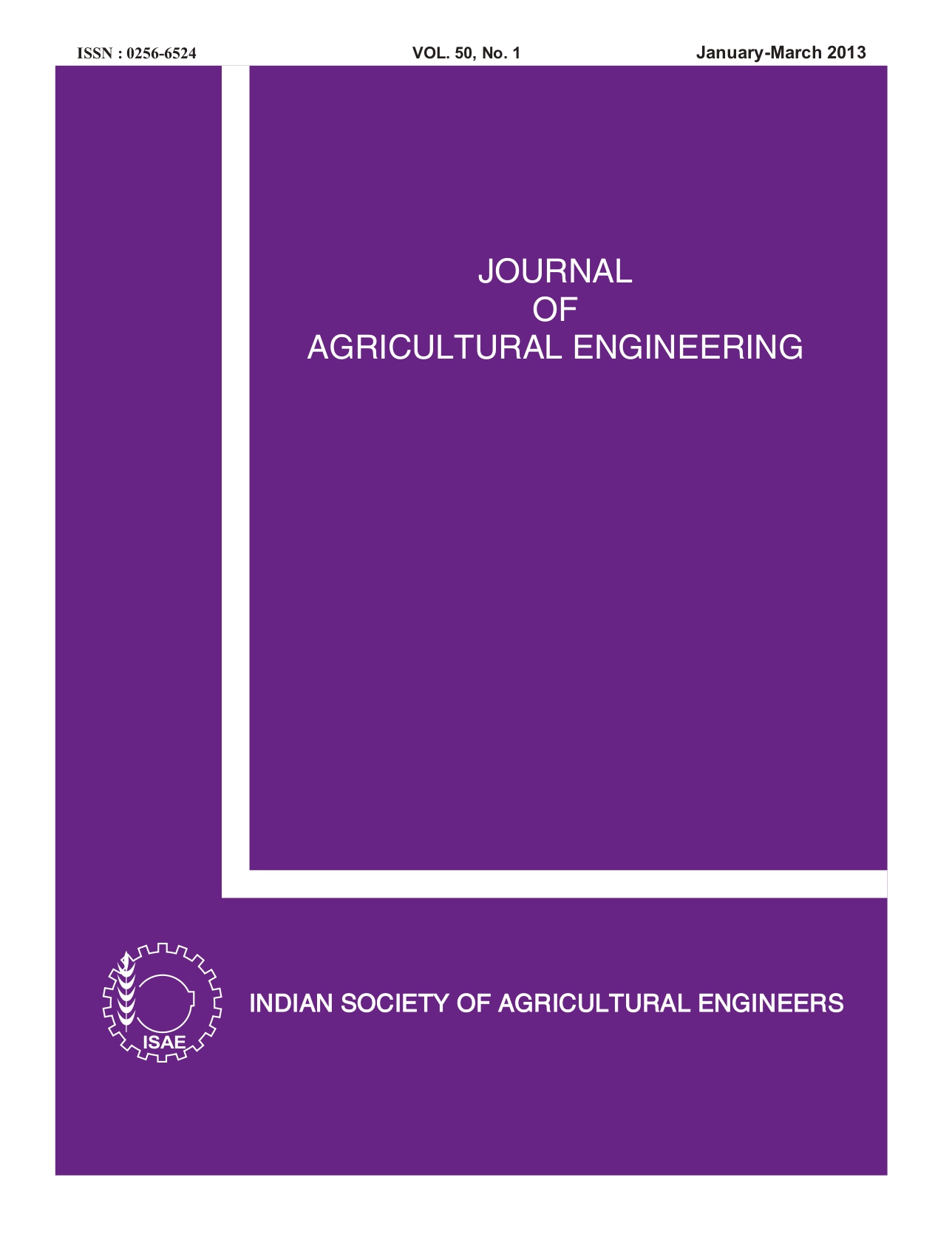Measurement of Physical Dimensions of Mung Bean
DOI:
https://doi.org/10.52151/jae2013501.1506Keywords:
Physical dimensions, moisture content, mung beanAbstract
Physical dimensions of mung bean (Vigna radiate) are essential to design equipment for handling, conveying, separation, drying, aeration, storage and processing of mung bean. Physical dimensions (area, perimeter, maximum radius, minimum radius, mean radius, major axis length and minor axis length) were measured as a function of moisture content in the range of 9.9 to 18.3% w.b. using digital image processing technique. Four hundred and fifty individual kernels were selected randomly for each moisture content and colour image of individual kernels using a digital camera. Of the seven morphological features analyzed, four features (area, perimeter, maximum radius and mean radius) of mung bean were significantly (α=0.05) different at different moisture contents. These four features increased linearly with increase in moisture content of grain. Minimum radius and length of the mung bean kernel did not show significant change (α = 0.05) with increase in moisture content from 9.9 to 18.3% w.b.
References
Al-Mahasneh M A; Rababah T A. 2007. Effect of moisture content on some physical properties of green wheat. J. Food Eng., 79, 1467-1473.
CODEX. 1995. Codex standard for certain pulses – CODEX STAN 171-1989 (Rev. 1-1995) – Codex Alimentarius Commission. Available at: www.codexalimentarius.net (April 14, 2011).
DES. 2010. Area, Production and Average Yield of Pulses in India: 2008-2009. Directorate of Economics and Statistics. Department of Agriculture and Cooperation. New Delhi, India. Available at: www.agmarknet.nic.in (November 20, 2010).
DMI. 2002. Post harvest profile of green gram. Directorate of marketing and inspection. Department of Agriculture and Cooperation, New Delhi, India. Available at: www.agmarknet.nic.in (November 25, 2010).
Majumdar S; Jayas D S. 2000a. Classification of cereal grains using machine vision: I. Morphology models. Trans. ASAE, 43(6), 1669-1675.
Majumdar S; Jayas D S. 2000b. Classification of cereal grains using machine vision: II. Colour models. Trans. ASAE, 43(6), 1677-1680.
Majumdar S; Jayas D S. 2000c. Classification of cereal grains using machine vision: III. Texture models. Trans. ASAE, 43(6), 1681-1687.
Majumdar S; Jayas D S. 2000d. Classification of cereal grains using machine vision: IV. Combined morphology, colour, and texture models. Trans. ASAE, 43(6), 1689-1694.
Paliwal J. 2002. Digital image analysis of grain samples for potential use in grain cleaning. Unpublished Ph.D. thesis, Winnipeg, MB, Department of Biosys. Engg., University of Manitoba.
Ramalingam G; Neethirajan S; Jayas D S; White N D G. 2009. Characterization of the influence of moisture content on single wheat kernels using machine vision. CSBE Paper No. 09-708, Winnipeg, MB, CSBE.
Tahir A R; Neethirajan S; Jayas D S; Shahin M A; Symons S J; White N D G. 2007. Evaluation of the effect of moisture content on cereal grains by digital image analysis. Food Res. Int., 40(9), 1140-1145.
Visen N S. 2002. Machine vision based grain handling system. Unpublished Ph.D. thesis, Winnipeg, MB, Department of Biosys. Engg., University of Manitoba.














